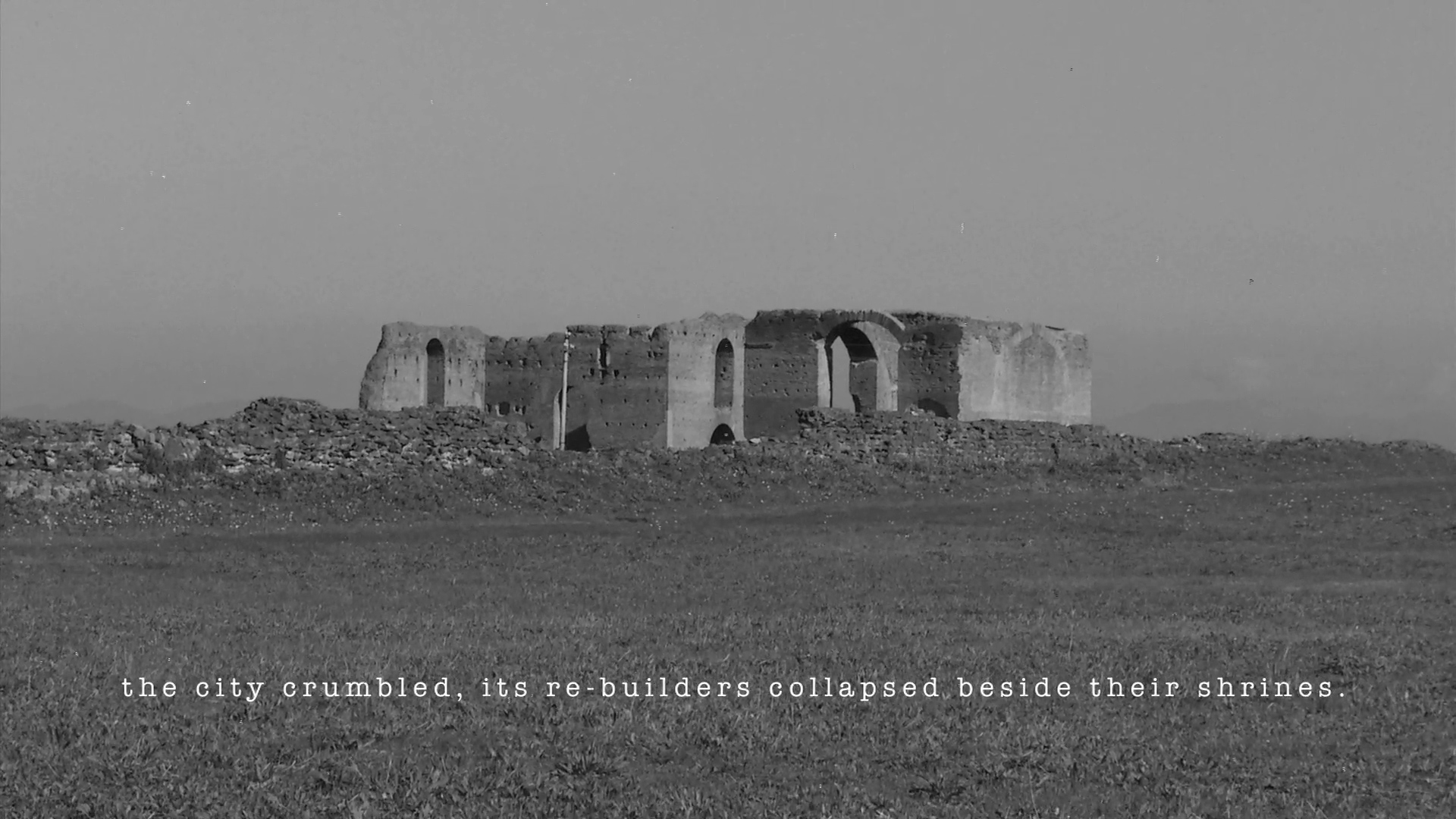2015
[ Video 30’]FHD
In 2014, I experienced a transformative year while living in Milan, Copenhagen, Turin, and Oggiono, and visiting cities like Malmö and Rome. This period felt like a rollercoaster ride as I embarked on my budding design career. Although I could envision my future, stability seemed elusive, marked by challenges and setbacks.A few years earlier, I discovered a poem titled "The Ruins" during a trip to Bath. Its themes resonated with me, particularly while cycling through former factories in Turin. On my fifteenth visit to Rome, I dedicated time to exploring an archaeological site, deepening my fascination with ruins. This interest led me to observe and document ruins in various contexts, paralleling my appreciation for art and music related to fragmentation.I began capturing film sequences and collecting audiovisual material, ultimately creating a short film that connects the past and present, as well as construction and deconstruction. Featured locations include the Roman ruins of a villa in Rome, the FIAT factory skeleton in Turin, and the sea, which highlights a pressing humanitarian crisis. The film’s layered soundtrack blends fragmented tracks and recorded noises from urban life and nature, while black-and-white imagery emphasizes destruction and nostalgia. In contrast, color sequences depict artists repurposing textiles, symbolizing renewal and reconstruction. This video ultimately captures the balance between creation and decay, inviting viewers to reflect on the beauty that can emerge from adversity. Through these themes, I aim to inspire a deeper understanding of resilience and transformation.
︎
*The Ruin is an elegy in Old English, written by an unknown author probably in the 8th or 9th century, and published in the 10th century in the Exeter Book, a large collection of poems and riddles. The poem itself is written near the end of the manuscript, on both sides of a leaf, with the end of the poem continuing to the next page. The section has a large diagonal burn from a kind of branding in the center of the page. The burn has rendered many parts of the script illegible. The poem describes decayed, broken buildings. The speaker imagines how the towers, walls, baths, and palaces must have looked at the time of their completion and envisions them full of life and action. This imagery is contrasted with the desolate reality of the speaker's time, the buildings having been ruined by time and fate.
︎
*The Ruin is an elegy in Old English, written by an unknown author probably in the 8th or 9th century, and published in the 10th century in the Exeter Book, a large collection of poems and riddles. The poem itself is written near the end of the manuscript, on both sides of a leaf, with the end of the poem continuing to the next page. The section has a large diagonal burn from a kind of branding in the center of the page. The burn has rendered many parts of the script illegible. The poem describes decayed, broken buildings. The speaker imagines how the towers, walls, baths, and palaces must have looked at the time of their completion and envisions them full of life and action. This imagery is contrasted with the desolate reality of the speaker's time, the buildings having been ruined by time and fate.
︎Spec - Tech
︎︎︎ flexible
︎︎︎ flexible










